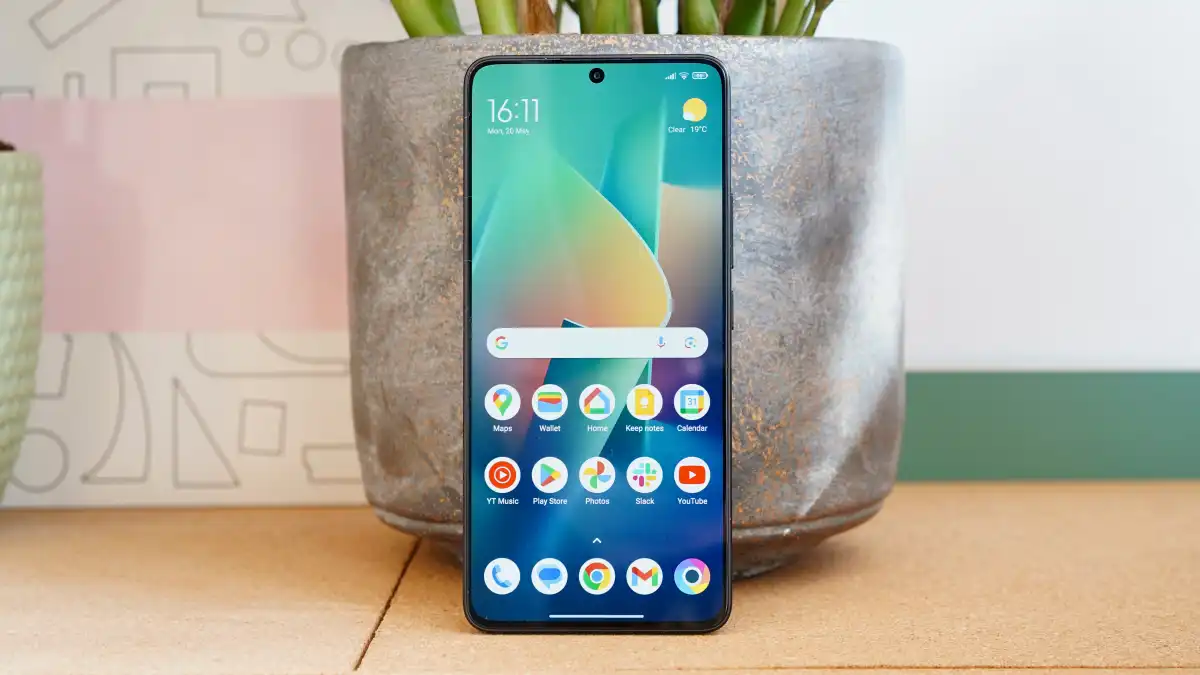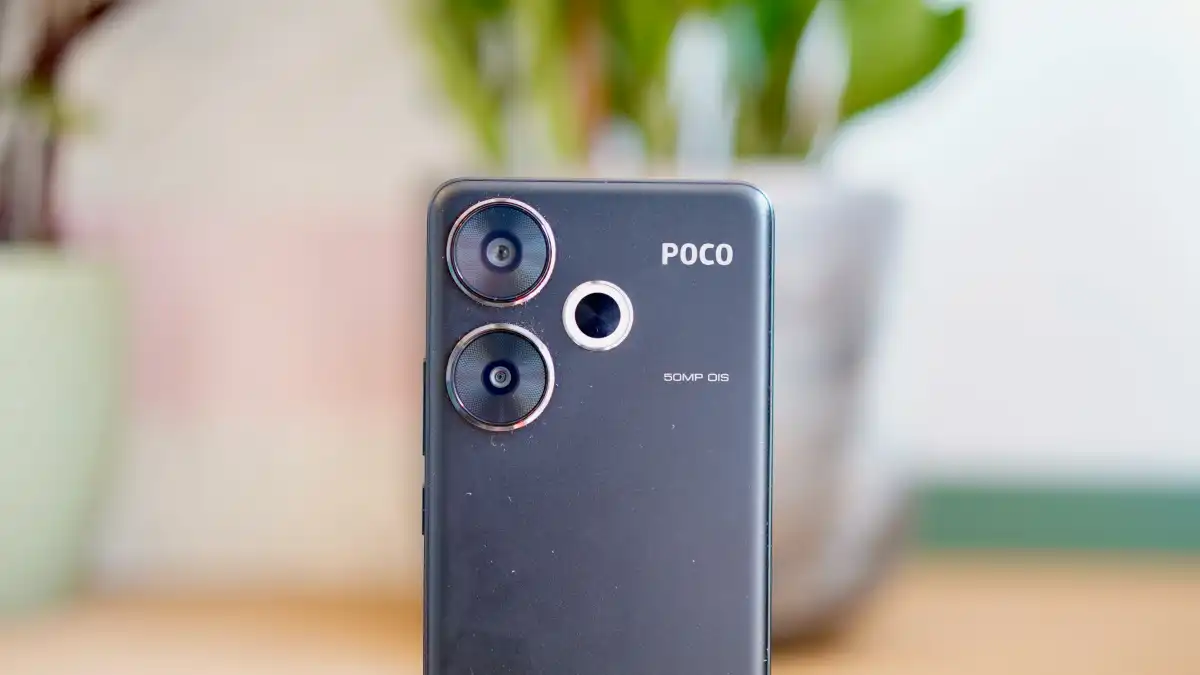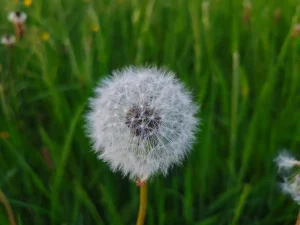Poco is all about performance at a low-to-mid-range pricing, and the Poco F6 is one of the best examples yet. But in a mid-range field that has become extremely strong in the last 12 months, I’m beginning to question if that’s enough.
Last year, we complimented the Poco F5 for its powerful performance, quick charging, and long battery life, but our expectations for mid-range phones have risen since then. The Pixel 7a and Samsung Galaxy A55 have produced excellent ‘flagship’ notes for less than £450.
The Poco F6 goes quicker and better on the components that make for a great media experience—the processor and the display – but is that still enough even with a rare price drop to £399?
if your goal is to get the best performance possible for the least amount of money possible (gamers on a budget take note), the Poco F6 resoundingly hits that sweet spot.
Specs
- Android 14, HyperOS
- 6.67in, 1.5K, OLED, 120Hz, flat display
- In-display fingerprint sensor
- Qualcomm Snapdragon 8s Gen 3
- 8GB/12/16GB LPDDR5X RAM
- 256GB/512GB storage
- 50Mp, f/1.6 main camera
- 8Mp ultra-wide camera
- Up to 4K @ 60fps rear video
- 20Mp front-facing camera
- Stereo speakers
- Dual-SIM
- Wi-Fi 802.11 a/b/g/n/ac/6e
- Bluetooth 5.4
- 5000mAh battery
- 90W charging
- 160.5 x 74.4 x 7.8mm
- 179g
- Launch colors: Black, Green, Titanium
Design & Build
- Drab plastic design
- Improved IP64 certification
- No 3.5mm headphone jack
The Poco F6’s design is more of a nip and tuck than a complete overhaul, with a conventional – dare I say dull? – all-plastic structure.
The frame is flat-edged, while the back cover has a small curvature. My model is a rather dismal black with subtle shimmers. Alternatively, you can choose Green or the brand-new Titanium.

Those circular camera modules are far too huge for their purpose, yet there’s something appealing about that giant ring doughnut of a flash and the open-mouthed expression it makes when viewed landscape.
By every metric, this phone is a trifle smaller than the previous one, but at 160.5 x 74.4 x 7.8mm and 179g, the differences are minimal. It feels strong in the hand, and the build quality has improved with IP64 certification and a Corning Gorilla Glass Victus front, which even the Poco F6 Pro lacks.

However, there’s no denying that the Poco F6 does neither look or feel as well as other phones in its weight class. Not with the Pixel 8a and Samsung Galaxy A55 immediately above it, and the Motorola Edge 40 Neo and Nothing Phone (2a) just beneath it.
Bad news for old-school headphones users: after returning the 3.5mm headphone jack on the Poco F5, the company has once again removed it on the Poco F6. In most cases, this is no longer a huge omission, but the Poco brand is known for being gamer-focused, and wired headphones are a popular choice.
Screen & Speakers
- 6.67in 120Hz OLED
- 2712 x 1220 ‘1.5K’ resolution
- Colour accurate with plenty of customisation potential
- Stereo speakers
This feels like something of a sweet spot
Poco may not have done much with the F6’s basic design, but fashion was never the sub-brand’s primary focus. Where it has made more significant enhancements is in the phone’s display.
It’s another 6.67-inch AMOLED panel with a fluid 120Hz refresh rate, but this one has a better 2712 x 1220 (1.5K) resolution. This appears to be a good compromise between FHD+ and QHD+.

The brightness has also been increased, at least in HDR circumstances, with the claimed peak reaching 2400 nits. In usual use, the peak is at 500 nits, which is close to what I recorded.
Xiaomi (still the manufacturing partner for Poco devices) always provides good color accuracy with its cheap sub-brands, and the Poco F6 achieves a sRGB gamut coverage of 96.4% in the appropriately named sRGB color mode, as well as an optimal average Delta E of 1. The phone also includes some of the best color tone-tweaking features, allowing you to boost those tones if desired.
There is true stereo sound from two speakers, one at each end of the display. Stereo separation is acceptable, but the sound lacks the depth and punch of higher-end phones, as is common.
Specs & Performance
- Snapdragon 8s Gen 3
- 8 or 12 GB of RAM
- 256 or 512GB storage
If you’re looking for the fastest phone possible for your £399, this is as good as it gets right now.
Poco phones have always been high-performing, but the Poco F6 raises the bar even further. It is one of the first phones to employ the Snapdragon 8s Gen 3 chip, which is a slightly stripped-down version of Qualcomm’s current flagship SoC found in many flagships.
This is extremely impressive for a handset costing £399. It produces benchmark scores that outperform even the Poco X6 Pro and the Pixel 8a, two of the most outstanding mid-range performers available.
This results in silky performance throughout, including seamless navigation, smooth animated home screen transitions, and quick program loading. Everything pops right out of the box, making something like the Samsung Galaxy A55, which focuses on other aspects, feel very sluggish in comparison.

Meanwhile, if you play a complex 3D game like Wreckfest or Genshin Impact, you’ll be able to crank all of the settings to the maximum while maintaining a steady frame rate.
Poco attributes some of this to ‘WildBoost Optimization 3.0’, a special in-house algorithm that allows for high-end gaming performance even at the higher 1.5K screen resolution. It also refers to an IceLoop vapor-liquid cooling technology, which is also included on the Xiaomi 14, with the goal of improving heat dissipation.
Whatever the reason, the Poco F6 delivers near-flagship performance. If you want the quickest phone possible at £399, this is the best option available right now.
Poco F6 benchmarks
Cameras
- 50Mp main camera with OIS
- 8Mp ultra-wide, 20Mp selfie
- 4K video at 60fps
When purchasing a Poco phone, you should be aware of the terms of the transaction. In exchange for blistering performance in comparison to its competitors, you must accept a camera arrangement that is, at most, poor.
The Poco F6 doesn’t change that, but that doesn’t mean improvements haven’t occurred. Indeed, with a new 50Mp Sony IMX882 primary sensor, f/1.59 aperture, and OIS, it’s a significant improvement over the Poco F5.
However, the Poco F6 isn’t actually competing with itself, as rivals such as the Samsung Galaxy A55 and the Pixel 7a produce better images.
Close-up food snaps look nice and appetising, even in modest indoor lighting

Shots shot under favorable lighting appear reasonably vivid and detailed. Even in low-light conditions, close-up food photographs appear attractive and appetizing. A close-up of a dandelion makes the subject stand out with bokeh, and the color tones are generally natural – although a tad strong on the green side.
However, when the light dims and Night mode is activated, the results are not particularly hot. Objects aren’t very distinct, there’s a lot of noise in the sky, and I saw some strange visual artifacts.
The 8Mp ultra-wide is largely ineffective, serving primarily as a placeholder. Xiaomi deserves credit for tone matching, making a respectable attempt to balance out the image of both cameras despite the obvious disparity in quality.




Congratulations for removing the worthless macro camera. There are only two cameras here, as there should be.
Selfies taken with the 20MP front camera aren’t too bad once you remove the cosmetic effect. Sure, they’re a little washed out, but skin tones are very natural, and the Portrait mode effectively isolates the subject from the background.
One notable feature of the flagship-derived processor is the ability to record 4K video at 60fps and super slow-motion 1080p films at 240fps, which isn’t usual at this price point.
Battery Life & Charging
- 5000mAh battery
- 90W charging
- Charger and cable included
Poco has once again given the F6 a large 5000mAh battery, but it confronts an apparent obstacle right away. That crisper 1.5K display is throwing around a lot more pixels than before, which always puts a burden on battery life.
Balancing that out is a near-flagship-grade processor with all of the energy-efficient trappings that come with it. As such, parity with the Poco F5 would have been a desirable outcome.
Parity has not been attained, but this is unlikely to be noticeable in normal everyday use. I was able to get through a whole 16-hour day of fairly modest usage with between 50 and 60% remaining in the tank, which was similar to my experience with the Poco F5 last year.

When it comes to more intensive usage, the Poco F6 falls well short of its predecessor. Its PCMark Work 3.0 Battery Test score of 10 hours and 26 minutes is 3 hours and 35 minutes less than the F5. Three guesses as to what the cause might be.
The Poco F6’s charging capacity has been increased from 67W to an even more amazing 90W, however I did not notice any improvement in charging timings.
After draining the phone completely and connecting the (bundled in) 90W charger, I discovered that it took 15 minutes to reach 41% and 30 minutes to 74%. That’s approximately the same as the Poco F5, a little worse even.
It took 48 minutes to charge completely, which is comparable to its predecessor but still longer than Xiaomi claims.
Again, there is no wireless charging, which we wouldn’t anticipate from a phone at this price. The Pixel 7a and Pixel 8a are outliers in this sense.
Software & Apps
- Ships with Android 14
- New Xiaomi HyperOS, but very similar to MIUI
- Three OS upgrades and four years of security
- Hit and miss AI Air Gesture system
Regrettably, software is once again a weak point with the Poco F6. Just as with the Poco X6 Pro, this is a phone that runs Xiaomi’s new HyperOS on top of Android 14.
This is allegedly an all-new UI, with previous Pocos having run on the outgoing MIUI. In practice, though, precious little has changed. This simply feels like the next version of MIUI with a new name.
You’re referring to a familiar home screen with the standard Xiaomi clock and weather widgets and app icons. The majority of the icons on the primary home screen are from Xiaomi, with Google’s default applications relegated to a separate folder.

The second home screen has additional applications, including Opera’s third web browser. Xiaomi’s Mi Browser appears on the main homepage, only a few inches above Google Chrome. Bloatware is a concern, with a couple of Poco community apps, a Xiaomi smart home app, a folder full of bad games, and another folder full of unnecessary third-party apps.
Flick down from the top of the screen, and depending on which side you swipe from, you’ll get either a notification center or a shortcut-filled Control center (basically the iPhone method of doing things). It’s far from the most elegant method, especially with the latter’s eyeball-assaulting multitude of buttons and widgets.
I also encountered several bugs and niggles here. A couple WhatsApp notifications did not appear, and I also had a microphone issue after connecting a set of Bluetooth earphones, which required me to turn Bluetooth off before I could speak to someone on the phone.
Poco has made a great fuss about a number of AI advancements, including the so-called ‘AI Air Gestures’. The concept is that the Poco F6’s front camera would identify when you place your hand in front of it and then respond to motions such as answering calls and controlling media playback.
The feature is buried in the Settings menu and is a little erratic when activated. While the phone identified my raised hand rather regularly (albeit not necessarily quickly), the subsequent gestures were only detected occasionally. The entire process was simply too uneven and clunky to be effective, and only a few apps supported it, including the default Music app, which I doubt many people will use ahead of their preferred streaming app.
Positively, Xiaomi is offering four years of security fixes in addition to three major Android OS updates. That is respectable, though not nearly on par with Google and Samsung.
Price & Availability
It is with great joy, and no small surprise, that the Poco F6 is cheaper than its predecessor. Significantly so, in fact.
A small amount of this can be attributed to experimenting with memory capacities. The Poco F5 started at $449 for the single model with 12GB of RAM and 256GB of storage, but the Poco F6 starts at $399 for 8GB of RAM and 256GB of storage.
There’s now a step-up option, too, which gives you 12GB of RAM and 512GB of storage for £449. It’s this latter top model that I’ve been testing.
As with all Poco releases, early bird offers are available until May 30, with the 256GB option presently priced at £339 on the official Mi shop and Amazon. The 512GB model costs £369 from the same retailers, but buying it from a Xiaomi website comes with a £19.99 gift card.


